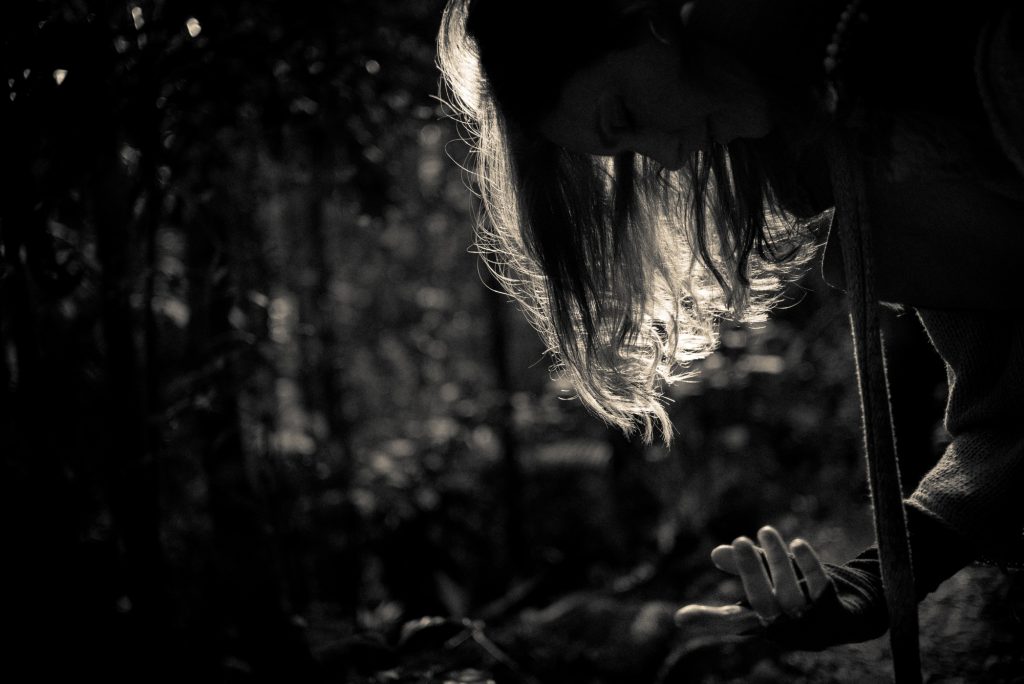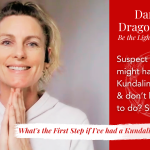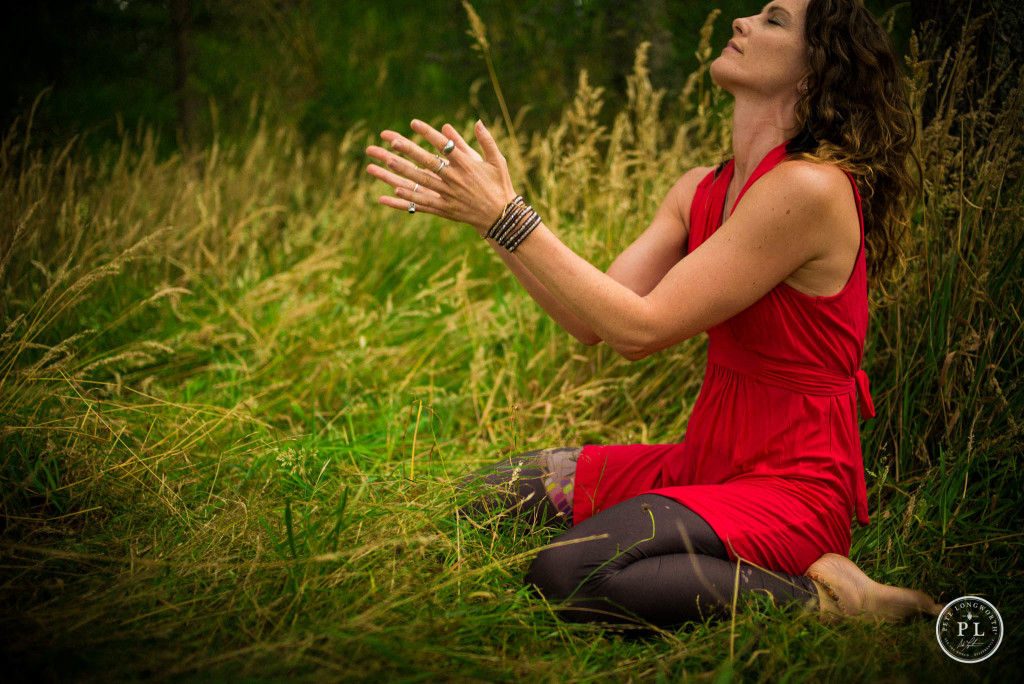
Our relationship to our emotional landscape is pivotal in the liberation process. Many of us come to the spiritual path with a desire to experience more happiness, more joy, more peace or more bliss. We’re chasing after desired emotional experiences. We often don’t realise how much of our life has been spent running away from uncomfortable experiences.
Yet this method of navigating reality – chasing pleasure and avoiding pain – will never lead to the very thing we seek – cid-ananda, or the joy of awareness.
Not joy as an emotion, but joy as the very fabric of existence itself.
It is only by learning how to be WITH anything and everything that is unfolding in this moment that we discover that joy of awareness. And that means systematically being with emotional blockages stuck in our body as they come into awareness.
When this process began for me, I had no idea what was going on. It was about 2002, and I was living in Whistler, Canada, and attending the new Bikram studio that had just opened up in Function Junction. In class after class after class, we would get to Dancer’s Pose, and I would burst into tears and start to cry… and would often cry for the entire rest of the class.
I attempted to do it quietly, but I knew enough even then to let the tears come. There was something about the process of the yoga – about getting into my body, and being in the container of the class, that allowed all this old emotion to surface.
By 2016, I was beginning to hold space for students and clients that allowed them to do this same work, digesting samskaras.
I still didn’t really know what I was doing, but it was happening, and so I trusted the happening.
In 2018 I discovered the work of Christopher Wallis, and discovered that there was all kinds of things written in the Tantric texts about this process. And so through studying the texts and the work of Wallis, I discovered that there were ways to make the process less painful, and easier.
What follows is a five step process that is the accumulation of the last 18 years of living out this process. I wish someone had shared this with me way back in 2002, and I’m sure it would have made the following decade or so much easier. There’s no doubt that I relived some samskaras over and over again, unnecessarily, because I was stuck in story, or because I was still resisting the process.
Five Step Process for Digesting and Devouring Samskaras
1. Embodiment
You need to be in your body for this process to unfold. If you’re not in your body, that means you’re either in your head (mind) or you’re disassociated. The reason I first began to experience this was in yoga class as I was becoming embodied. Many of you will already naturally be embodied, others of you will come in and out of embodiment.
A few of you may still be mostly in your head or disassociated. If this is you, double down on asana practice, as this is the easiest and fastest way to become embodied. If you’re in your head but have a regular practice, you may be able to navigate to embodiment using a breath awareness practice (see one of the many audios I’ve uploaded on The Tantrika’s Toolbox.)
Required Skills:
- Be able to tell ‘where’ you are internally – disassociated, in your head, in your body.
- Be able to navigate into embodiment using the necessary tools.
2. Awareness
Awareness is also called Essence Nature, or Shiva Nature. It’s the one who holds all our physical, emotional/mental, and energetic experiences. When we’re orientated to awareness we are no longer identified with the thought or emotion that we’re experiencing. We’re aware OF that thought or feeling. Embodiment and awareness are closely linked, but not entirely synonymous. It’s possible to be embodied and yet still identified with one’s thoughts and feelings.
When we are oriented to awareness means that there is NO story being told about the emotion. The mind isn’t trying to figure out WHY you’re feeling this way – it’s completely unnecessary and takes one out of the process. instead, one orients completely to awareness itself, over and over again.
It’s only through staying in awareness, and out of story, that digestion can unfold. Staying in story about what happened, and who’s to blame, and why you feel this way will keep the emotion stuck in the body.
Required Skills:
- Being able to notice when one is going into story, and know how to drop the story
- Being able to notice when one is orientated to Awareness.
- And being able to navigate into awareness using the necessary tools.
3. Refined Awareness • Relationship
Now we’re getting into the subtle nature of our experience. Once we’re embodied and aware, the next step is being able to notice HOW we’re relating to our experience internally. Are we resisting it? Hating it? Clinging to it? Afraid of it? Feeling ashamed of it? Guilty about it?
This is where stickiness is created, and dissolved. We can’t digest a samskara if we’re resisting it or making a new story about it (which will generate feelings of shame or guilt about the feeling).
Sometimes the way we’re relating to an experience can be almost invisible because it’s so much a part of the water we swim in all the time. If there’s a subtle layer of self-hatred ALWAYS within our awareness, we may not be able to ‘see’ it, or ‘feel’ it because it’s so familiar and ‘normal’.
This is where inquiry can be very useful, to make the invisible, visible. Sometimes it’s enough to ask ‘how am I relating to that feeling?’. The answer will reveal itself.
Required Skills
- Be able to feel the layer between awareness and the thoughts/feelings.
- Be able to inquire and attune to the way we’re internally relating to what’s unfolding.
4. Radical Self-Acceptance
This is the antidote to however we relating to whatever’s unfolding. If you’re hating how you’re feeling, you can’t digest and devour it. But if you notice you’re hating how you’re feeling, then you can choose to orientate to radical acceptance of how you’re feeling. That’s the choice, that’s the work.
Doing Lockdown Level 4 & 3, I was in a crucible of intensity, being bombarded with samskaras and karmas on a daily level. This was when I realised how often I was either resisting how I was feeling – no! I don’t want to be here! Or, how much I was hating myself for even that experience. It took a few weeks to notice this layer, and then once I did, all of my energy and attention went into the cultivation of radical self-acceptance. When the samskaras or karmas arose, I would immediately focus on radical self-acceptance of what was happening. It was an extraordinary process and literally blew a hole in my heart… and since then, I haven’t had to cultivate the radical self-acceptance, it’s just been present.
Required Skills
- Be able to drop any secondary stories about what we’re experiencing.
- Be able to cultivate a felt-sense of radical self-acceptance of whatever is arising.
5. Cultivate Wonder
Samskaras will digest and devour if you work steps 1 – 4. Step 5 is a bonus – and it’s the bonus that makes it SO MUCH EASIER. Almost enjoyable. Like, for real. Again, this is about noticing the attitude or feeling one has toward what’s unfolding. You may be in radical self-acceptance of what’s happening… now imagine being in total wonder and awe about what’s happening.
Yep, that’s right – go from acceptance to wonder and awe. There is an entirely different felt-sense of what’s unfolding.
The first time I did this, I was hunched in a ball on the kitchen floor sobbing my heart out. And then I remembered cultivation of wonder and awe, which Christopher Wallis speaks about in The Recognition Sutras. I immediately applied that teaching and began to drop into wonder at what was unfolding. As I did this, the light on the kitchen floor caught my eye, and the worm pattern on the wooden floor… there was a sense of expansion and lightness, and even though I was still sobbing hard out, I was more IN the wonder and awe than in the pain of the sobs. The sobs began to feel rather sweet, as every sense was filled with the delight of simply being.
That was a radical shift that took digesting and devouring samskaras to a completely new level. And, the next time I was able to cultivate wonder and awe whilst digesting and devouring, I also flushed out a vikalpa (limiting belief) I’d had that this work has to be painful and hard. I saw clearly that was just a belief and this work can be wonderful and awestruck… that was a huge breakthrough!
Required Skills
- Be able to cultivate a sense of wonder and awe by choice.
There you have it – a five-step process for digesting and devouring samskaras as they arise.
Get into your body, become aware, drop the story, notice how you’re relating to the feeling, cultivate radical self-acceptance and cultivate wonder and awe.
NEXT STEPS • How to integrate this Teaching and USE it.
- Memorise those steps. This is important so that it’s really easy when you’re in the middle of the darkness to recall what to do. It needs to be automatic in you.
- Do any required practices to strengthen your ability to action each of the five steps. Identify where you have any weaknesses, identify a practice that will strengthen that weakness, do that.
- When emotion arises, practice the five steps, over and over again.
The more you do this, the easier it gets, until it just becomes natural. And then you’ll no longer be afraid of challenging feelings, you’ll be able to lean in and feel whatever is there, and even, perhaps, feel the sweetness and joy of it all. Even when it’s uncomfortable and painful.





 When Kundalini Awakens. Now What?
When Kundalini Awakens. Now What?